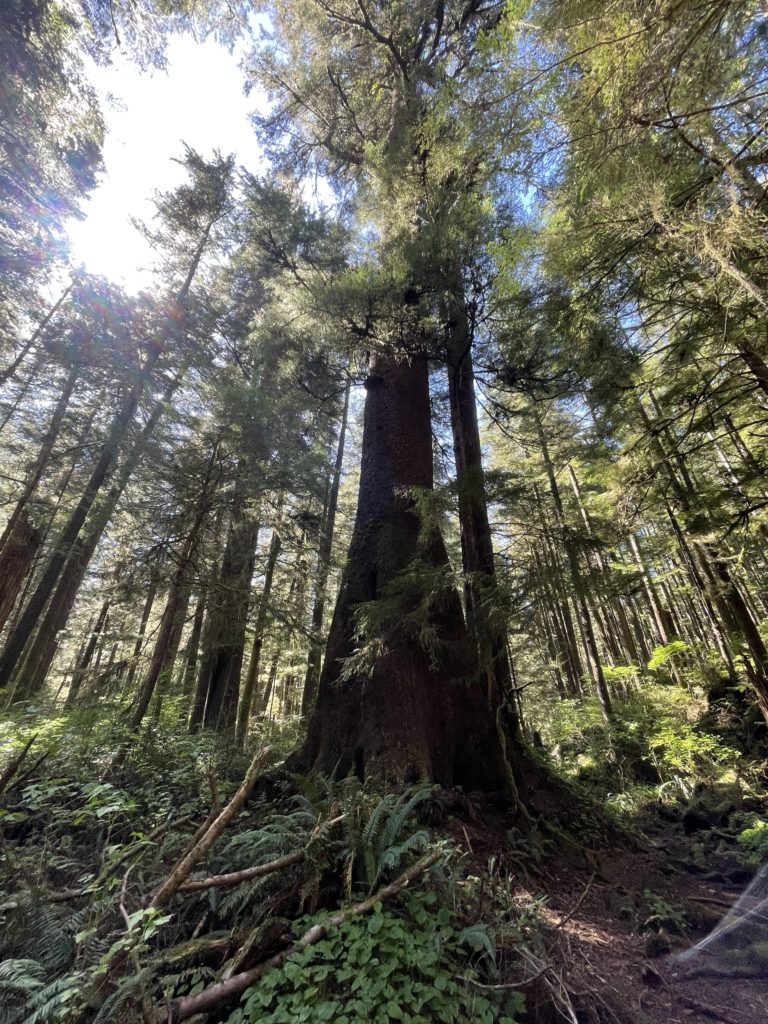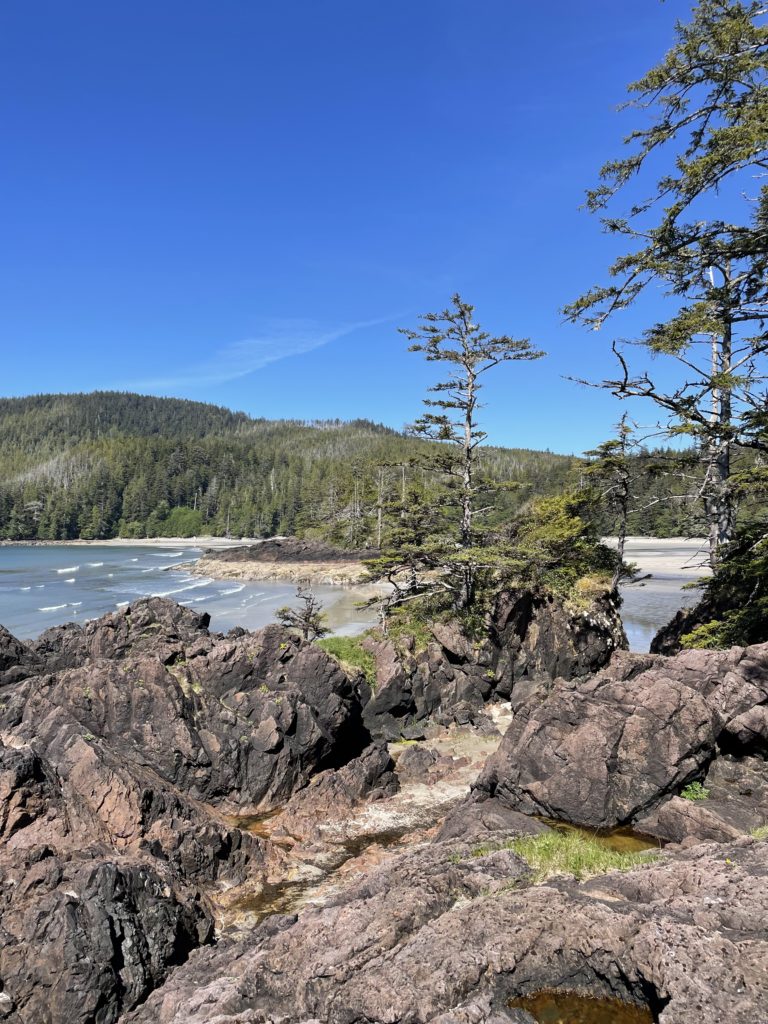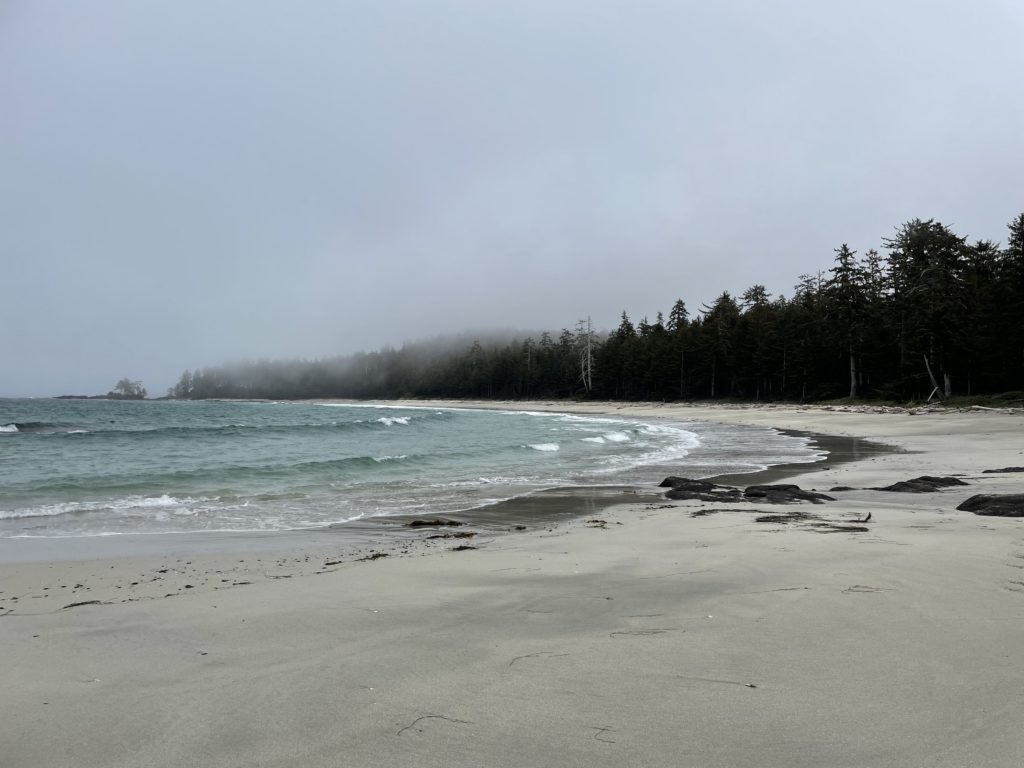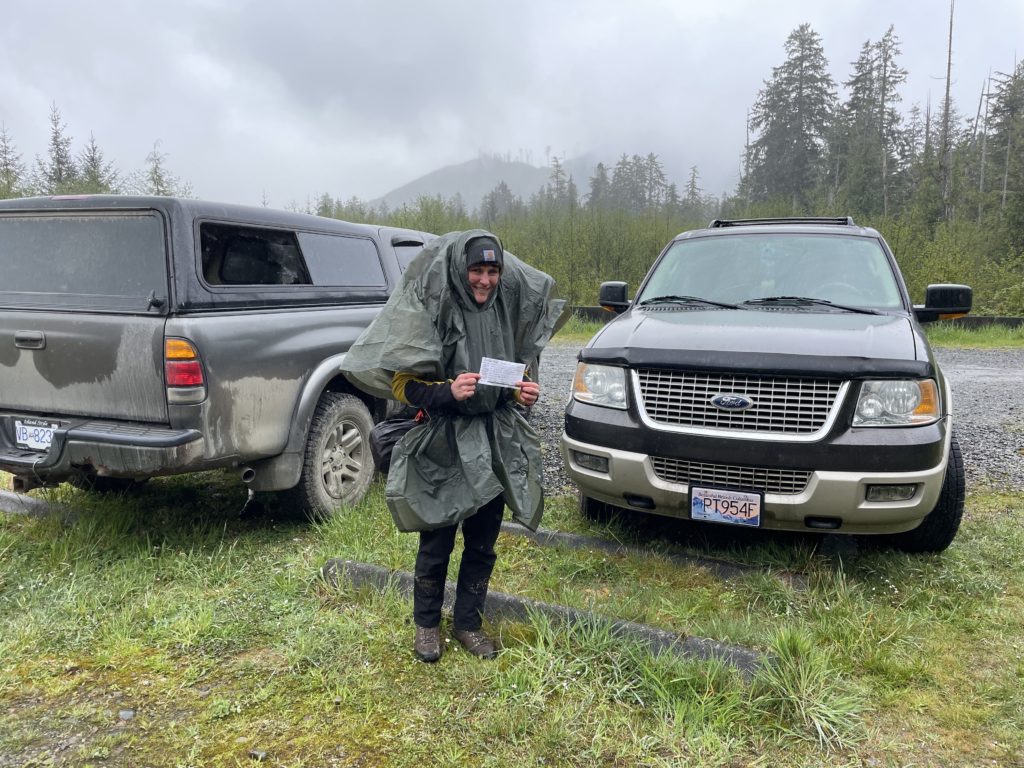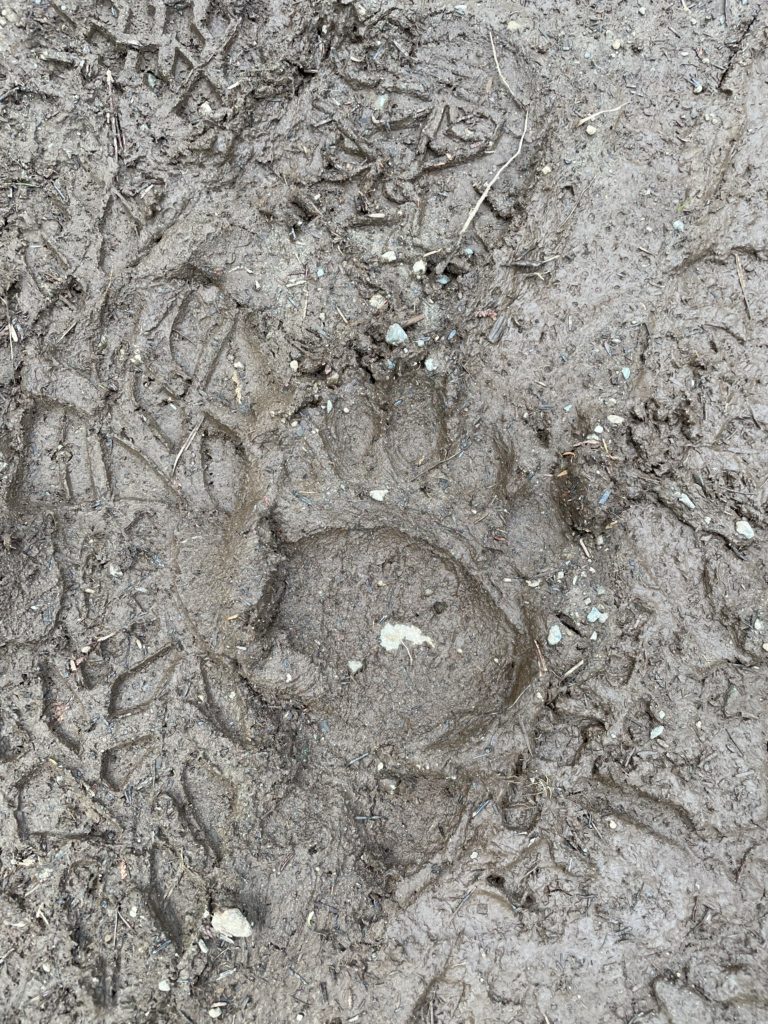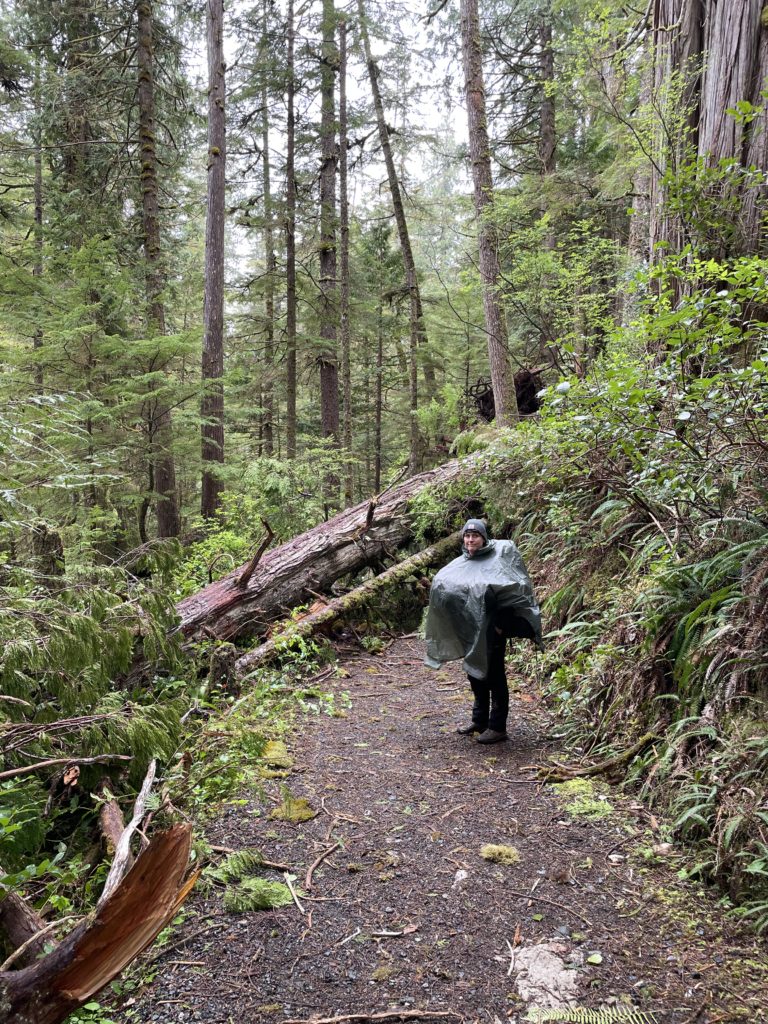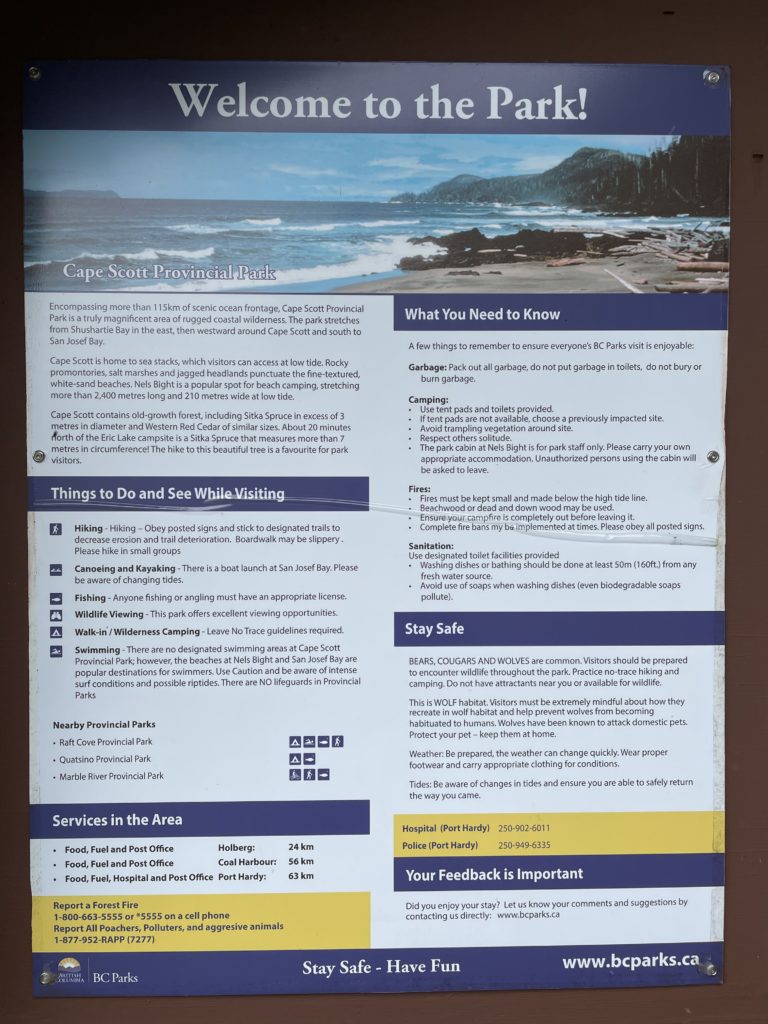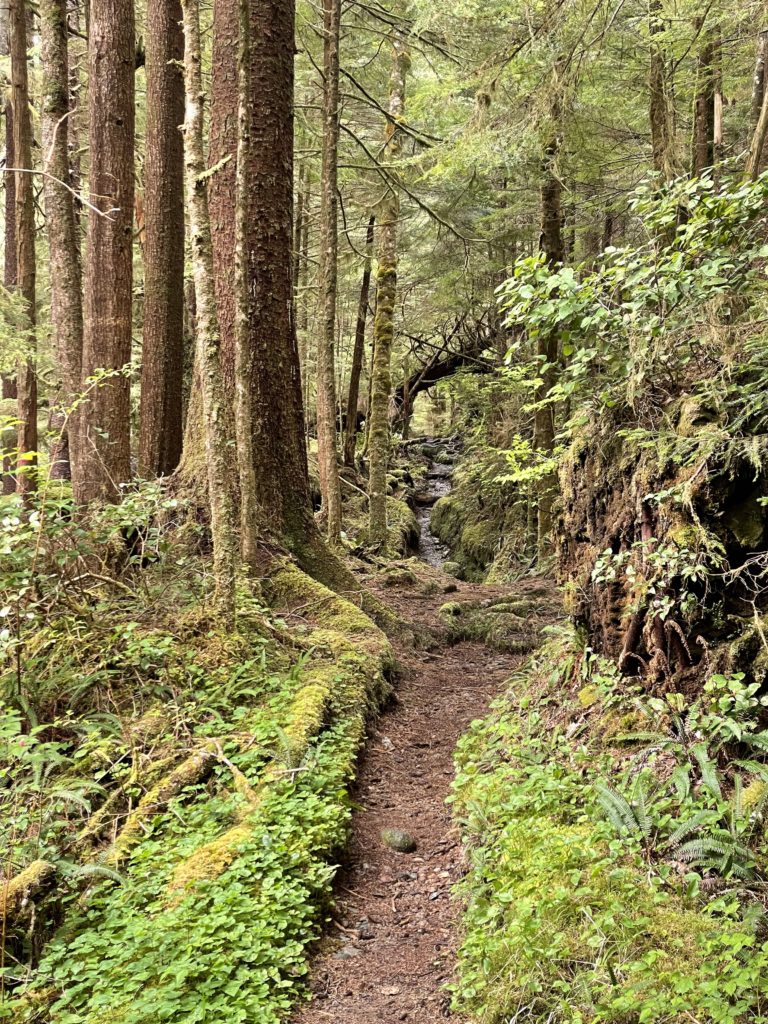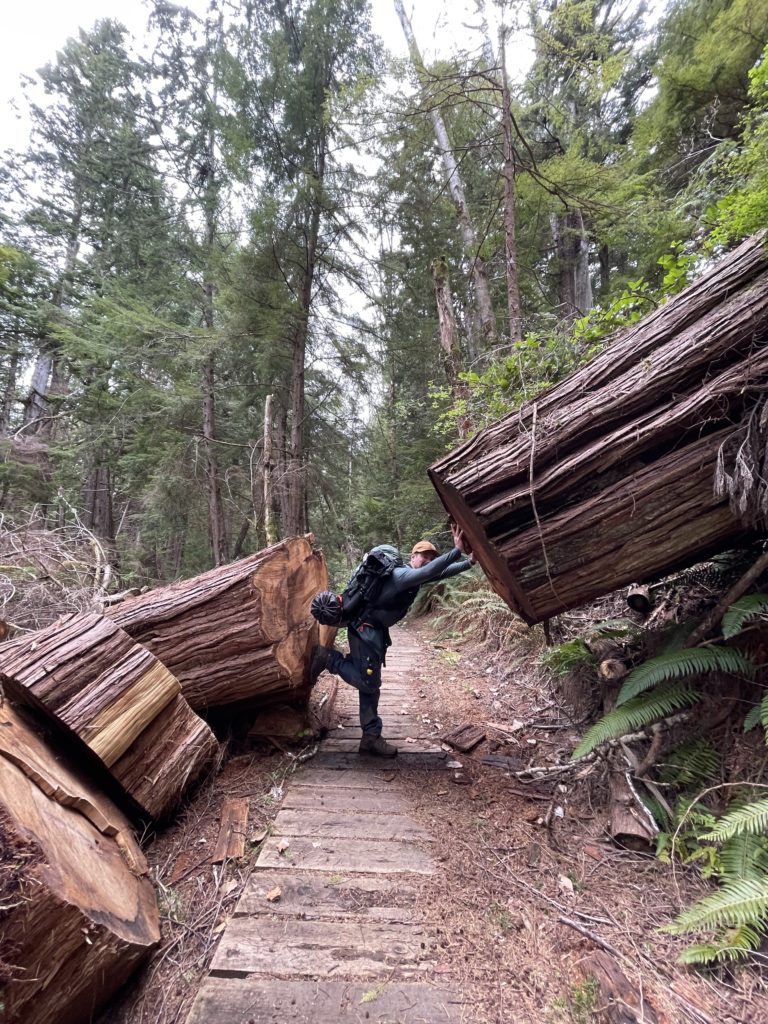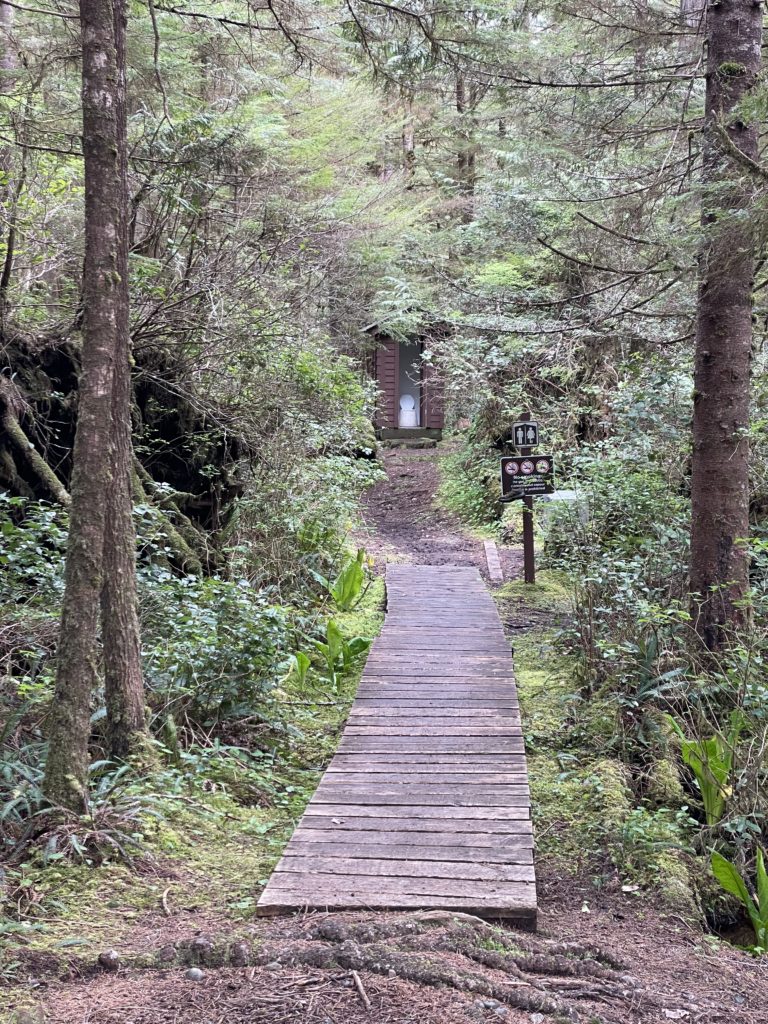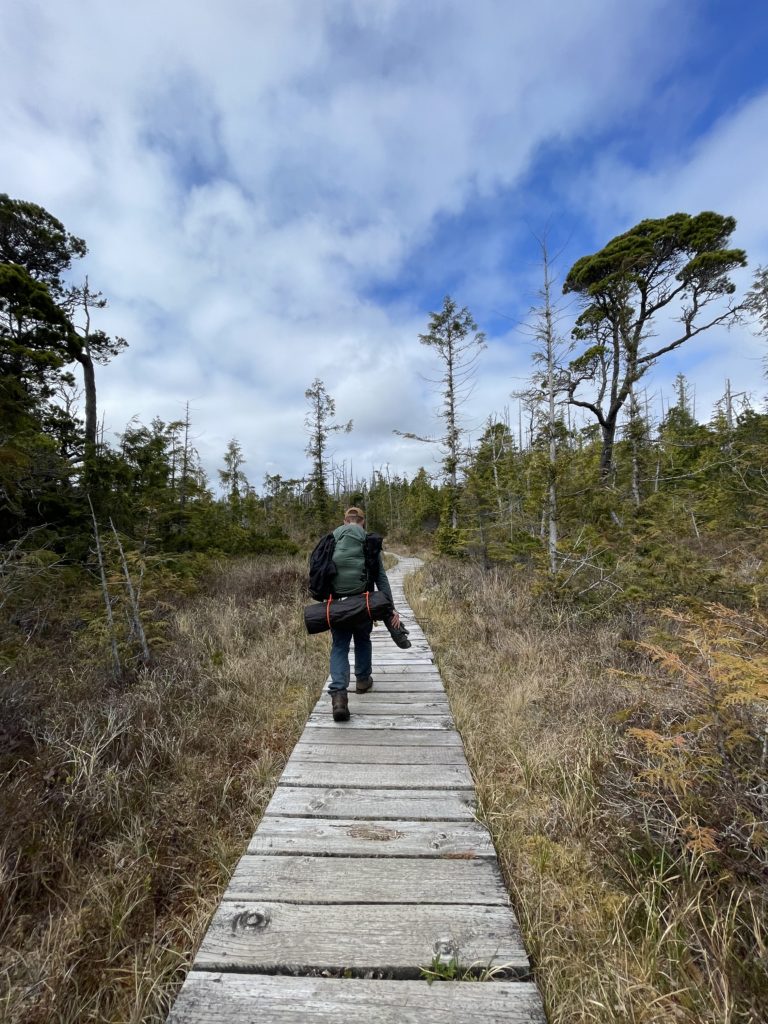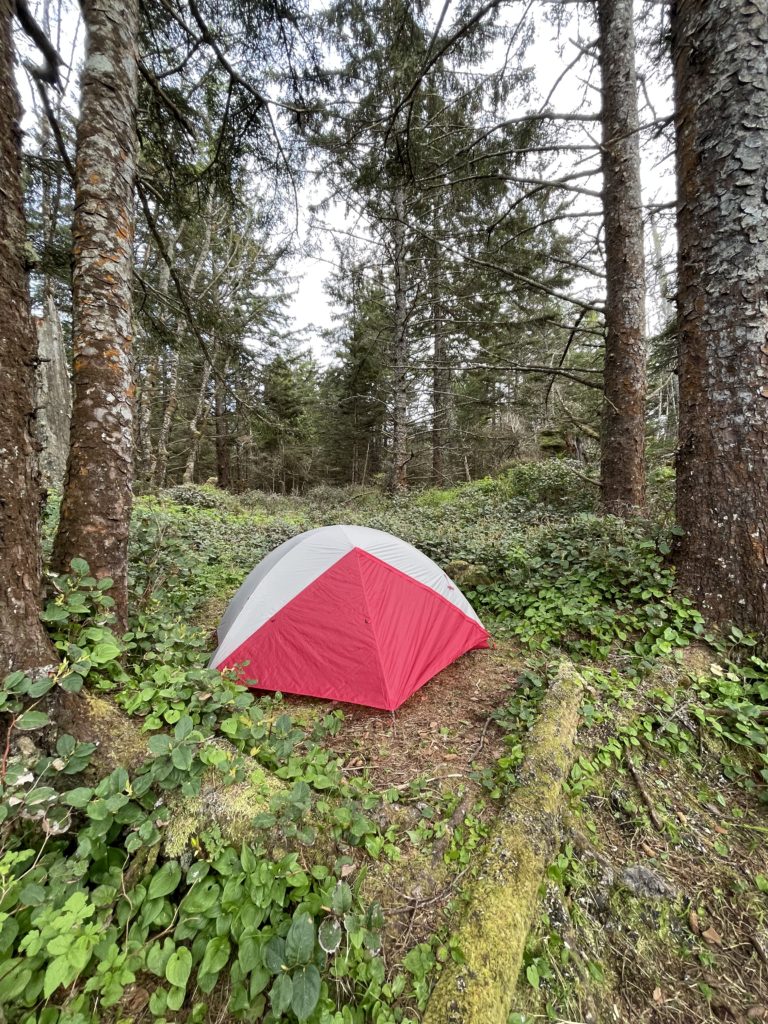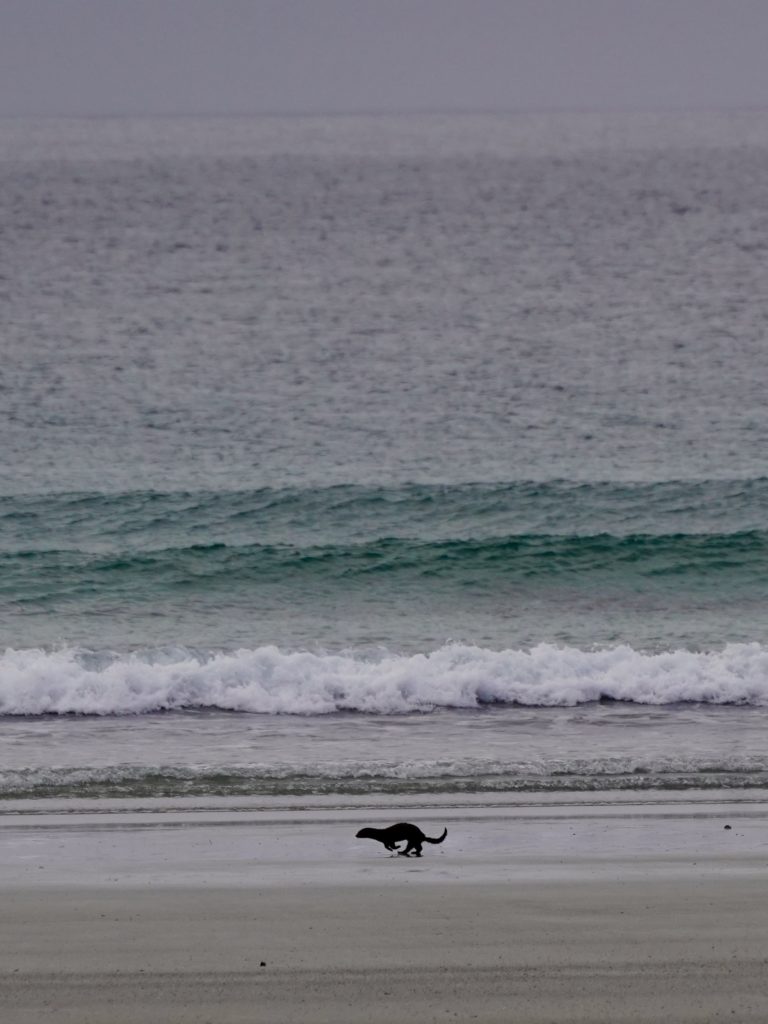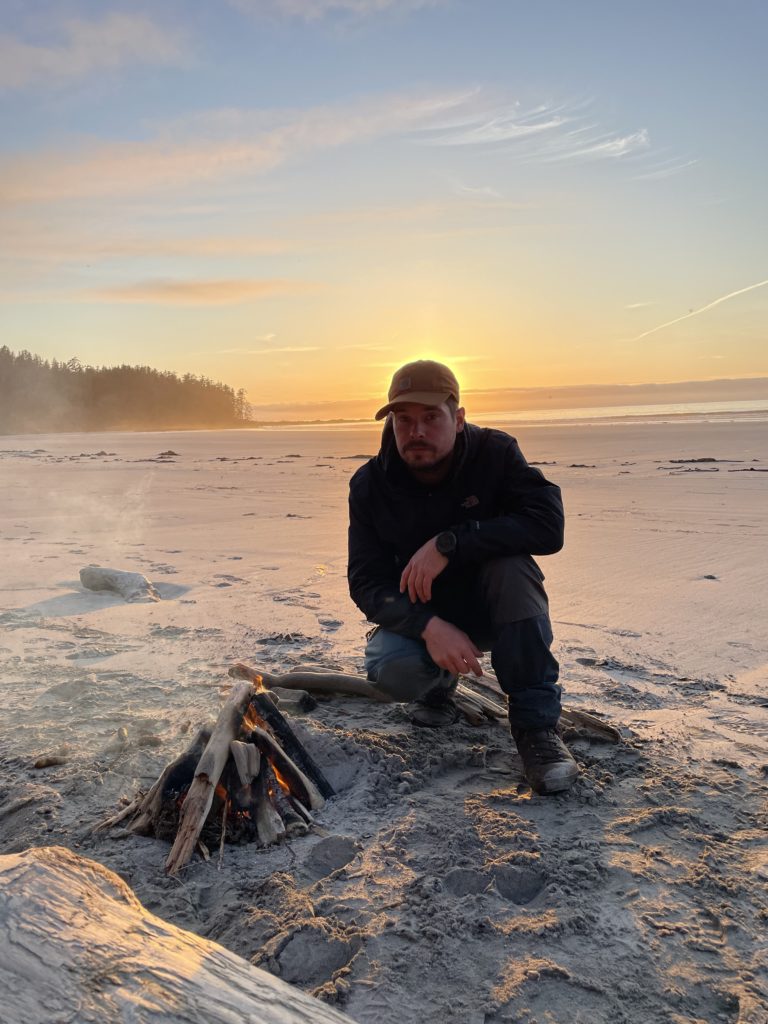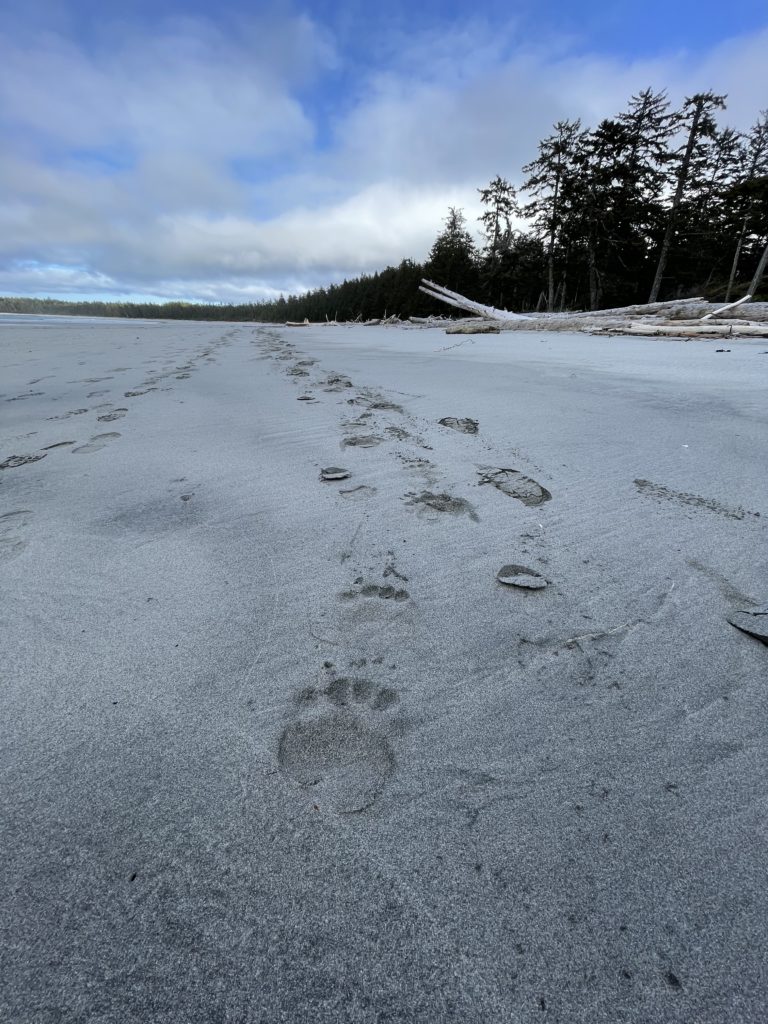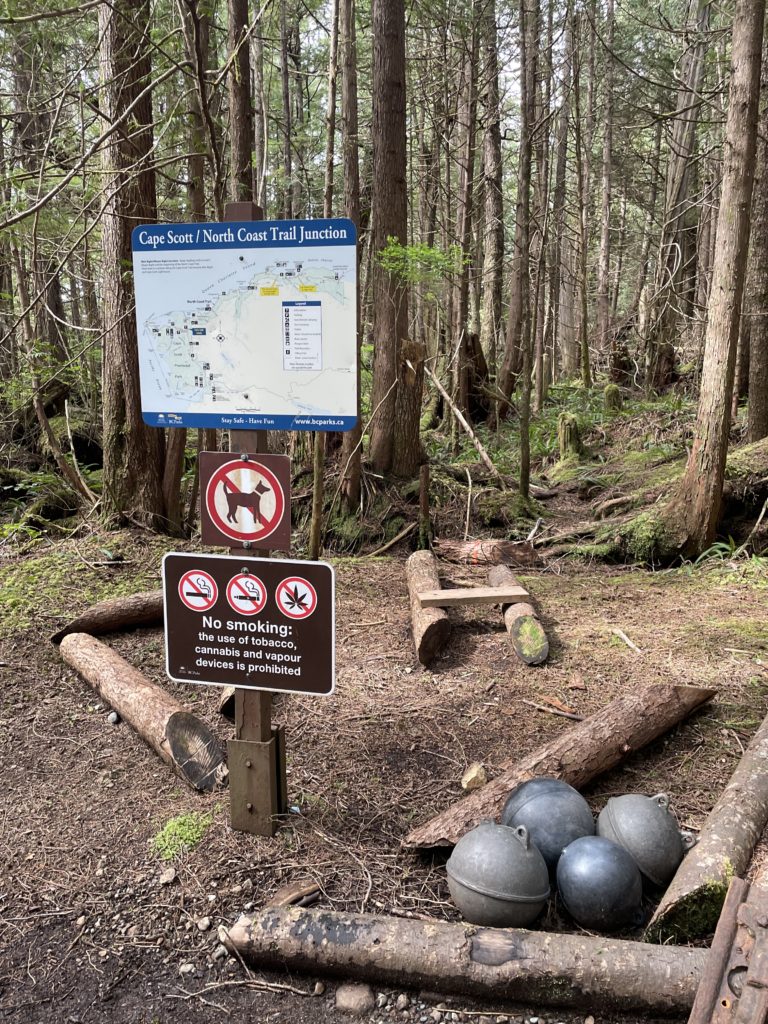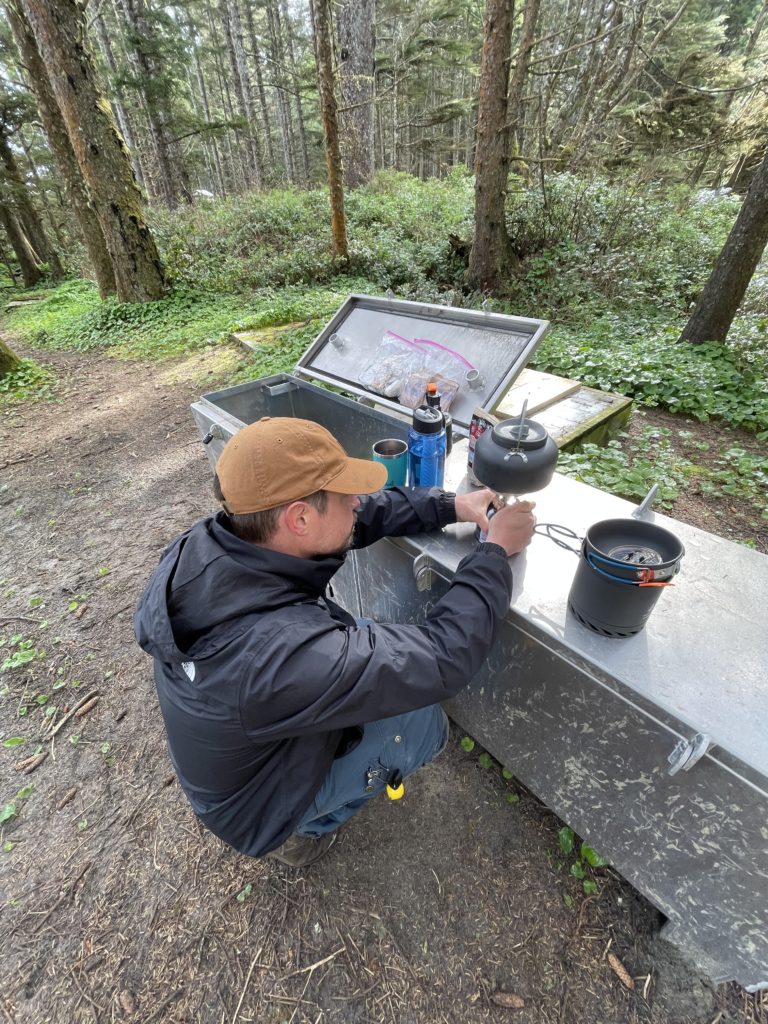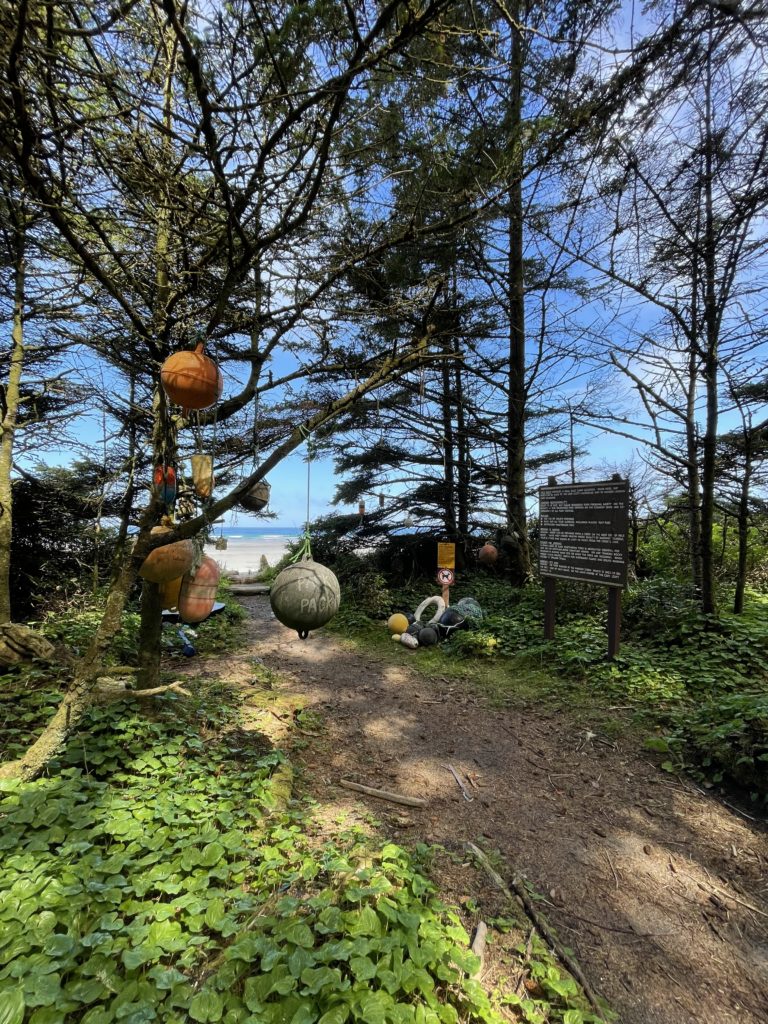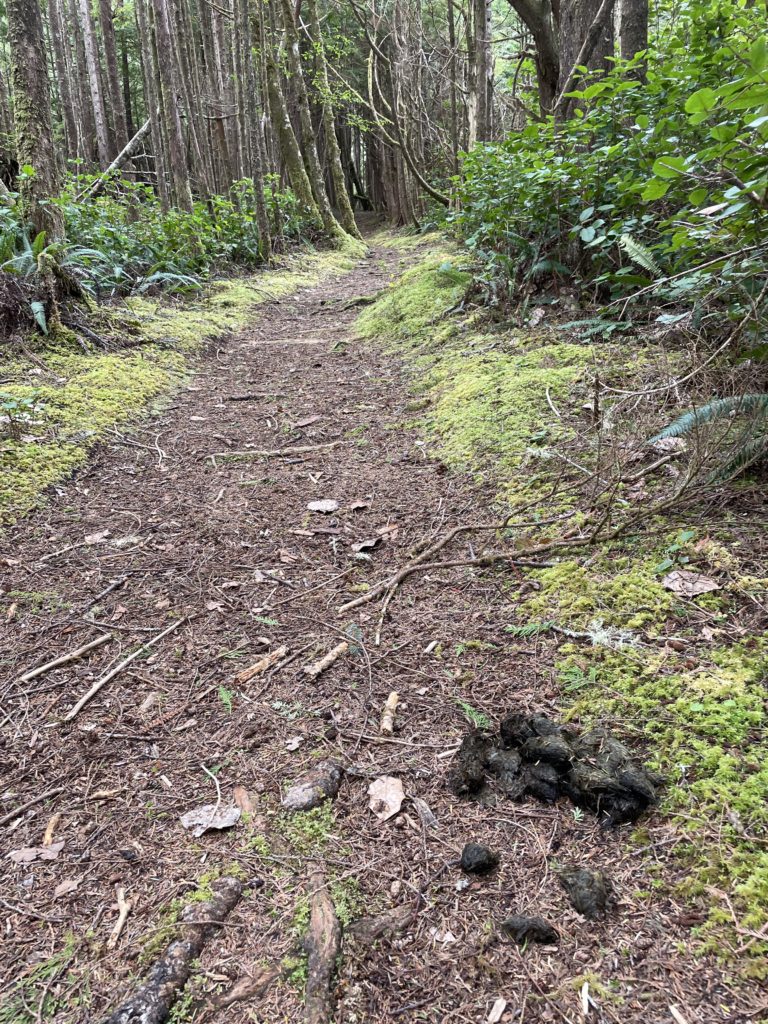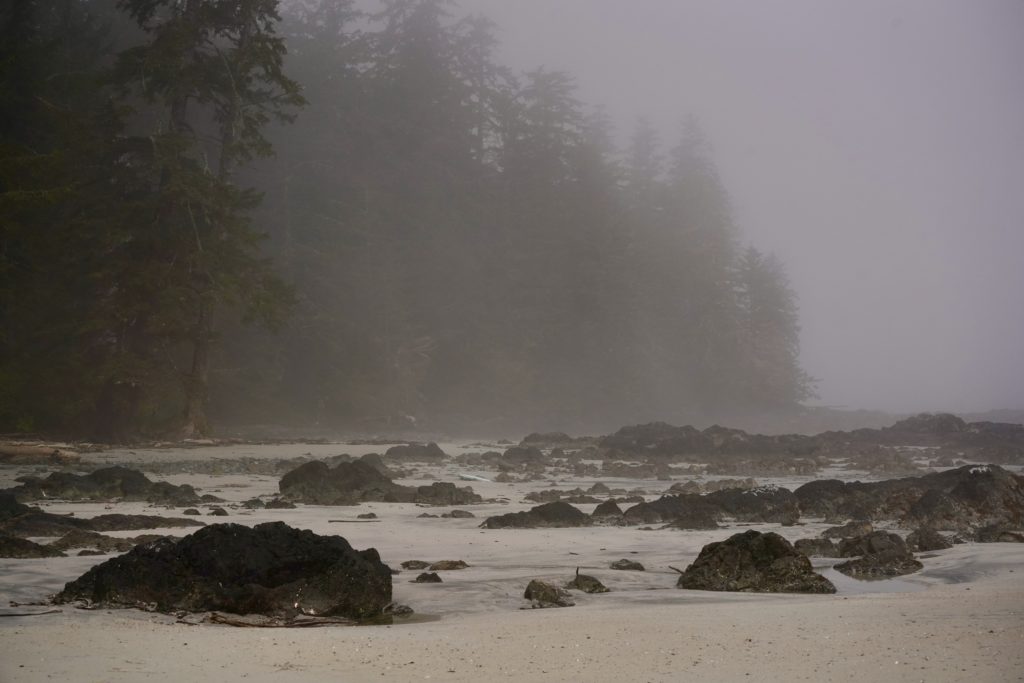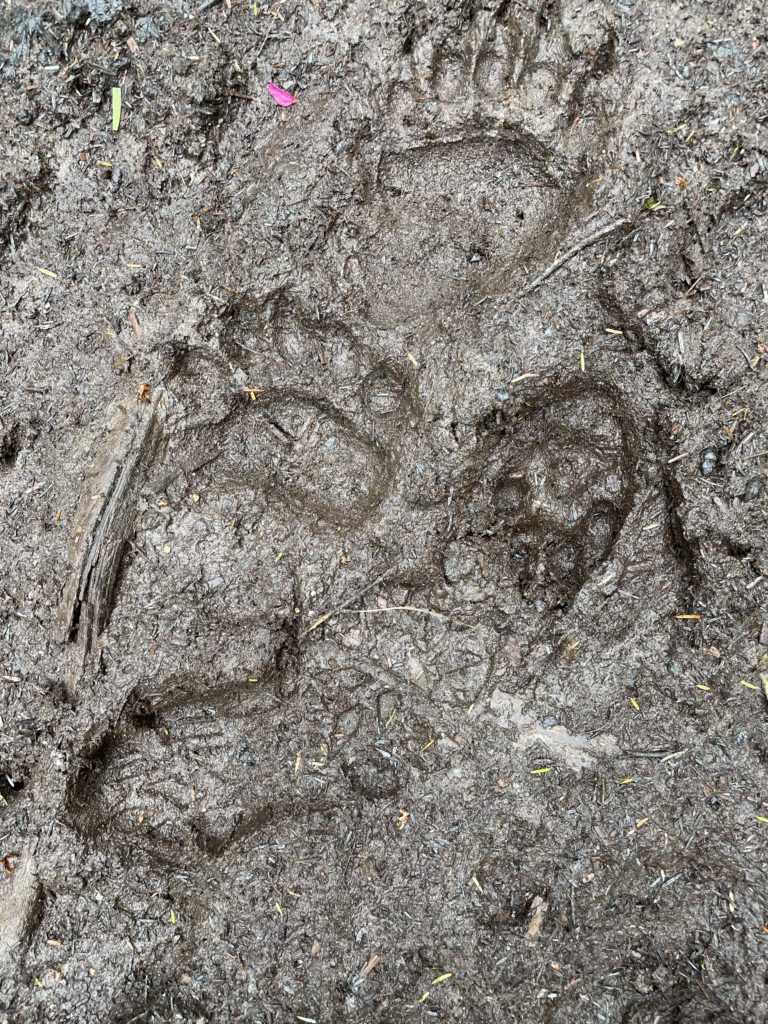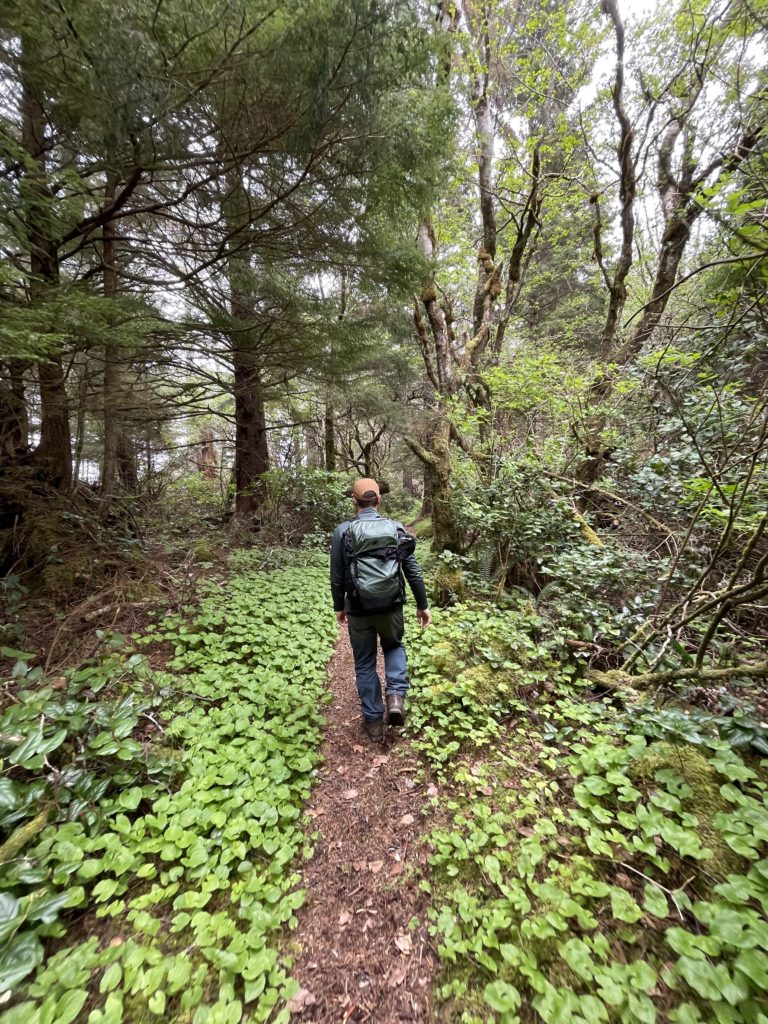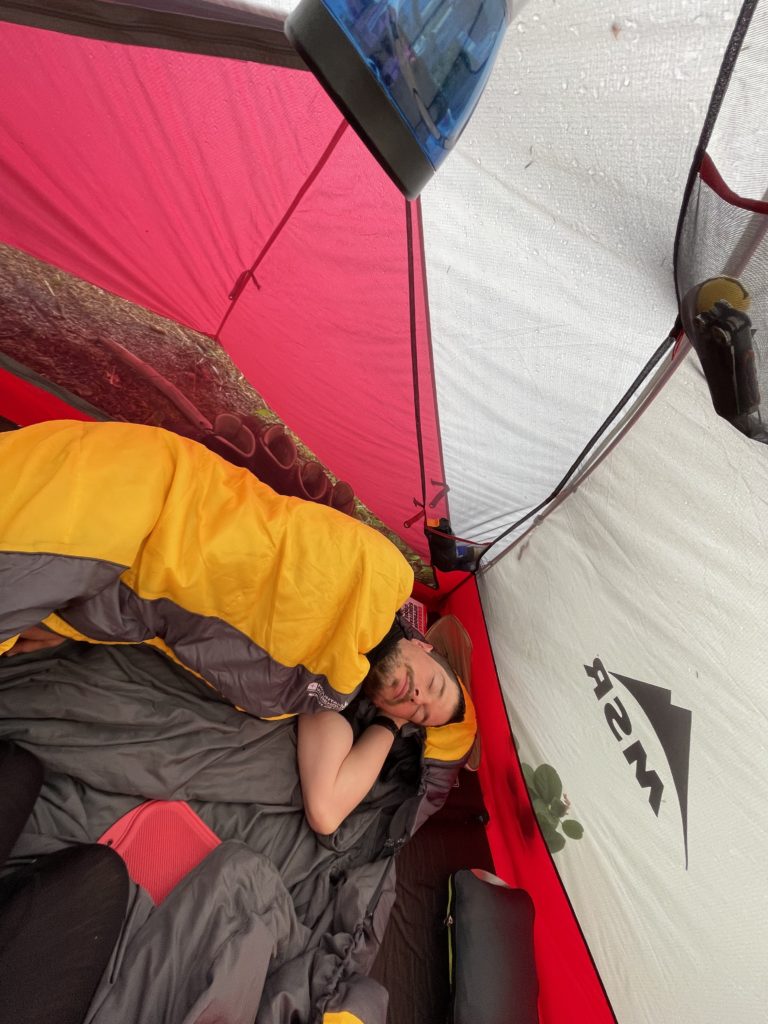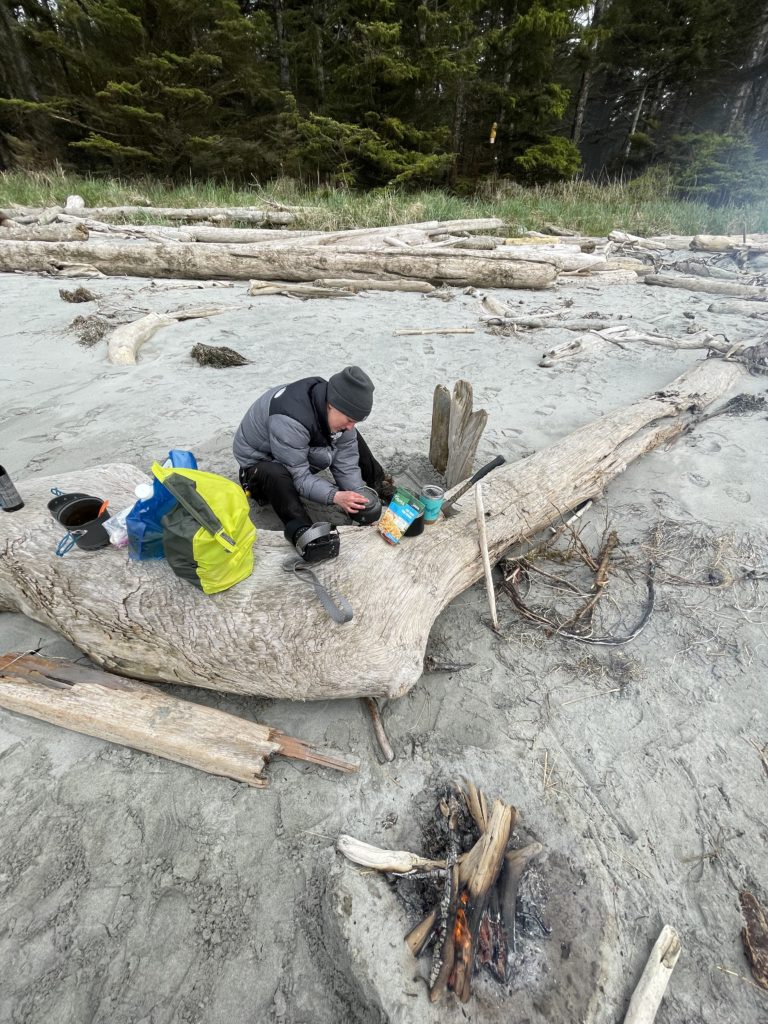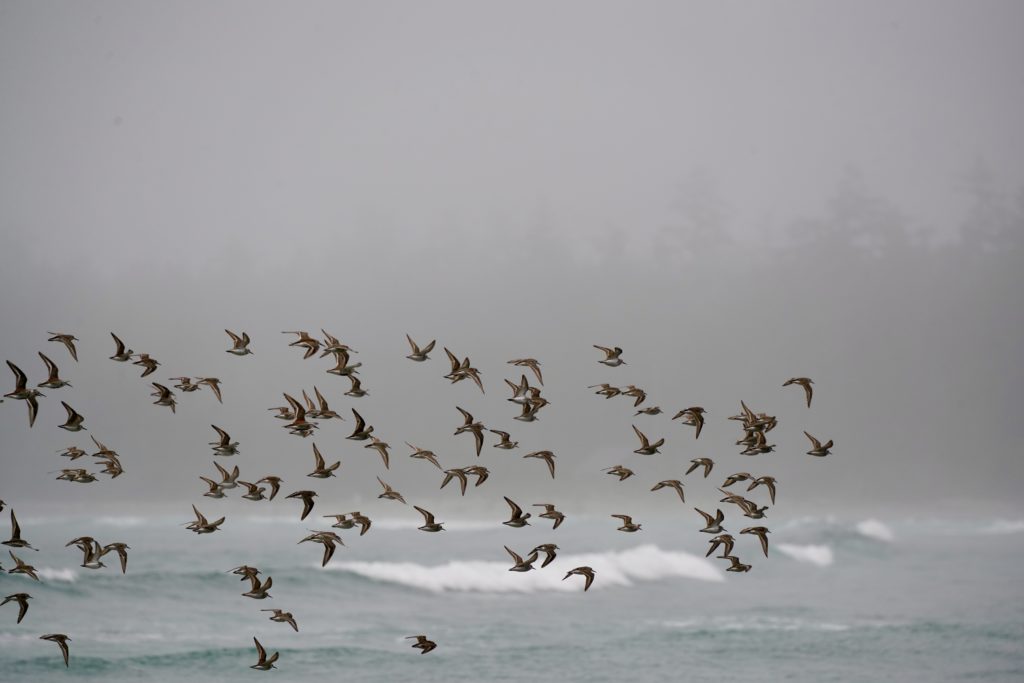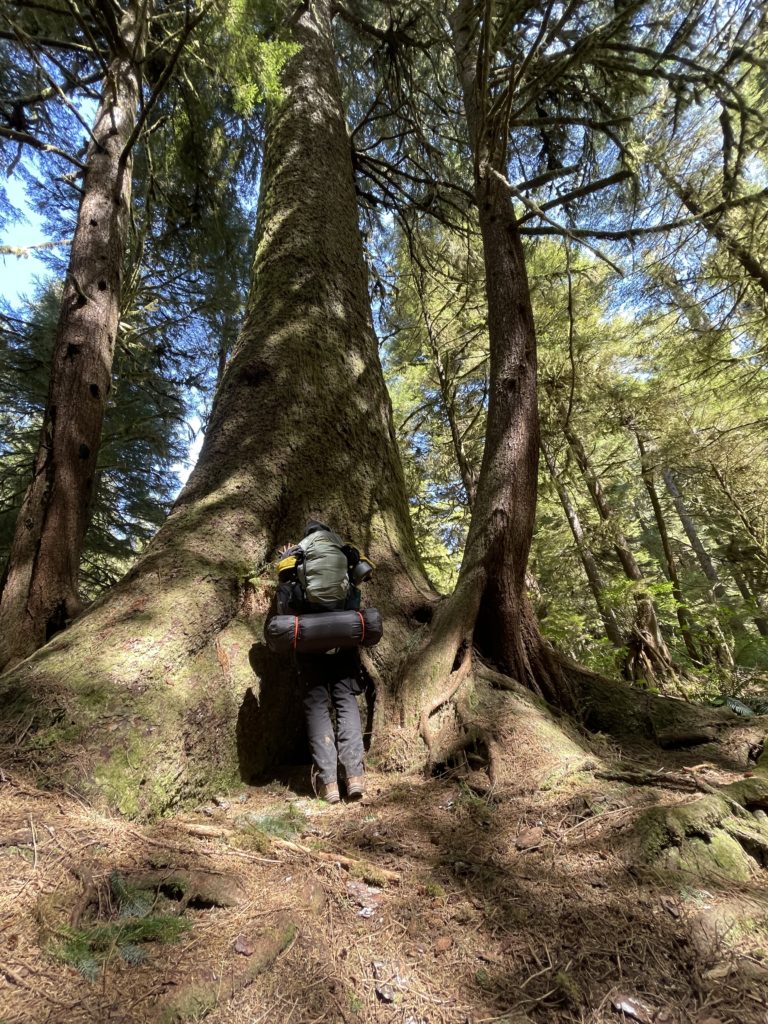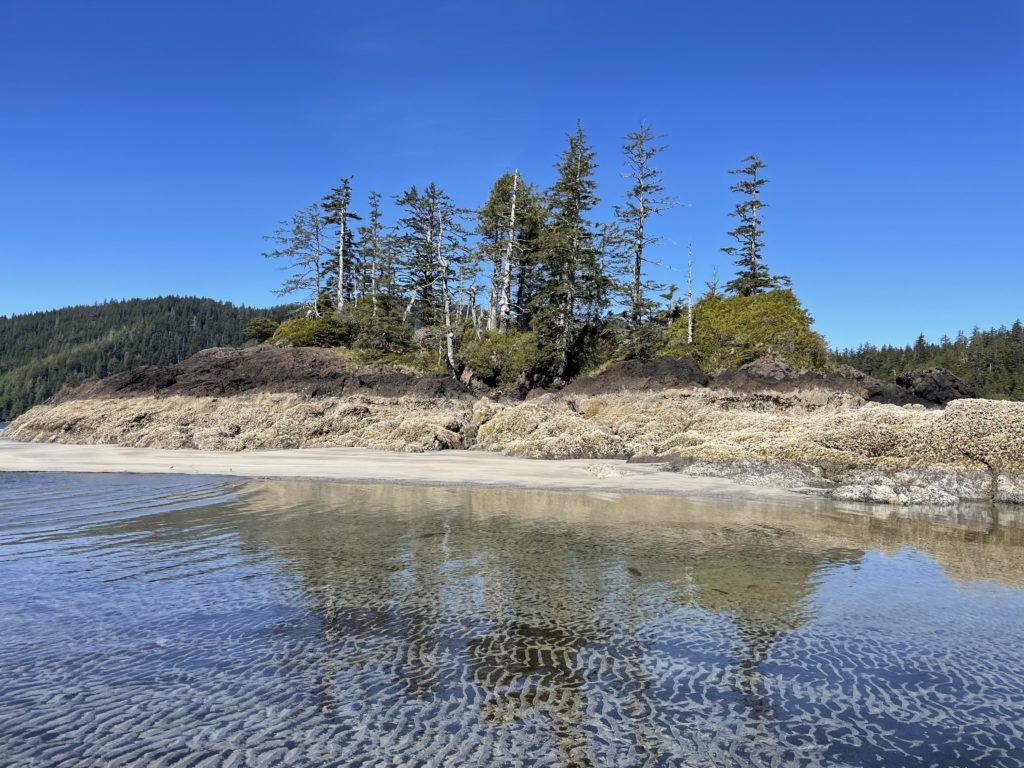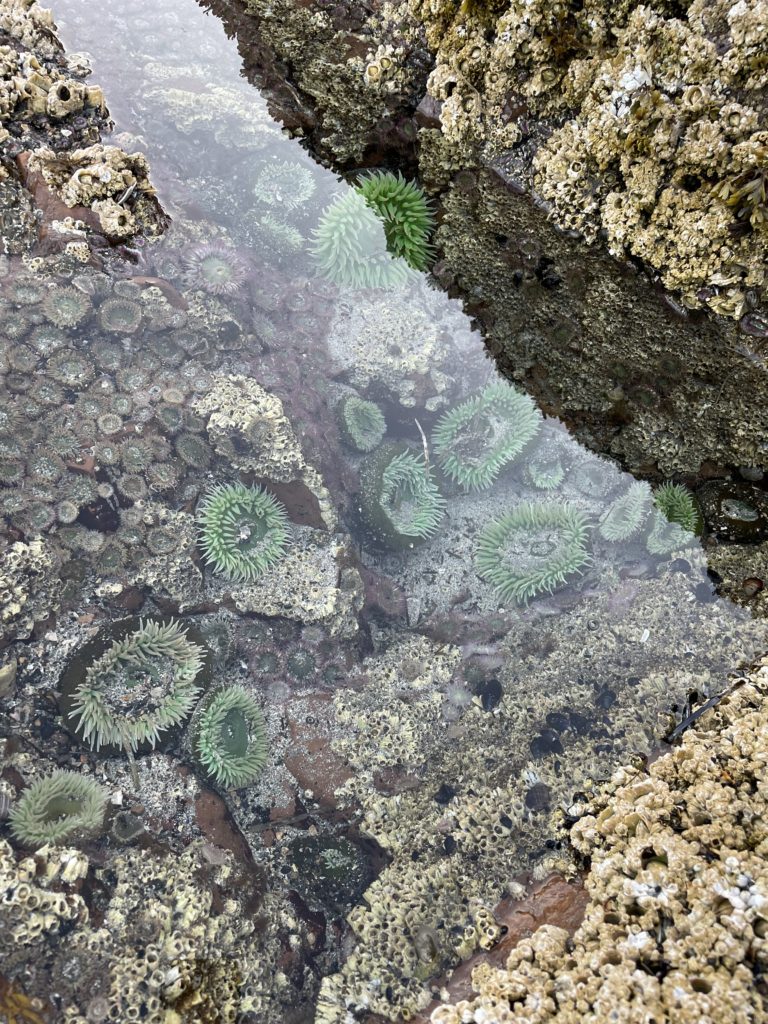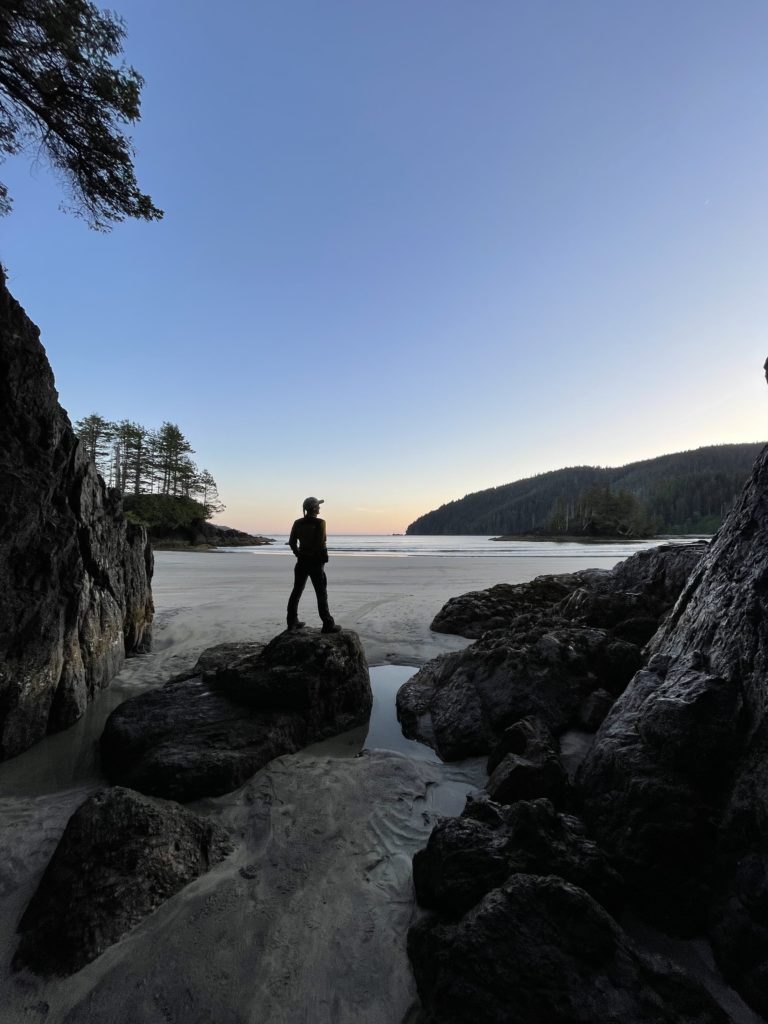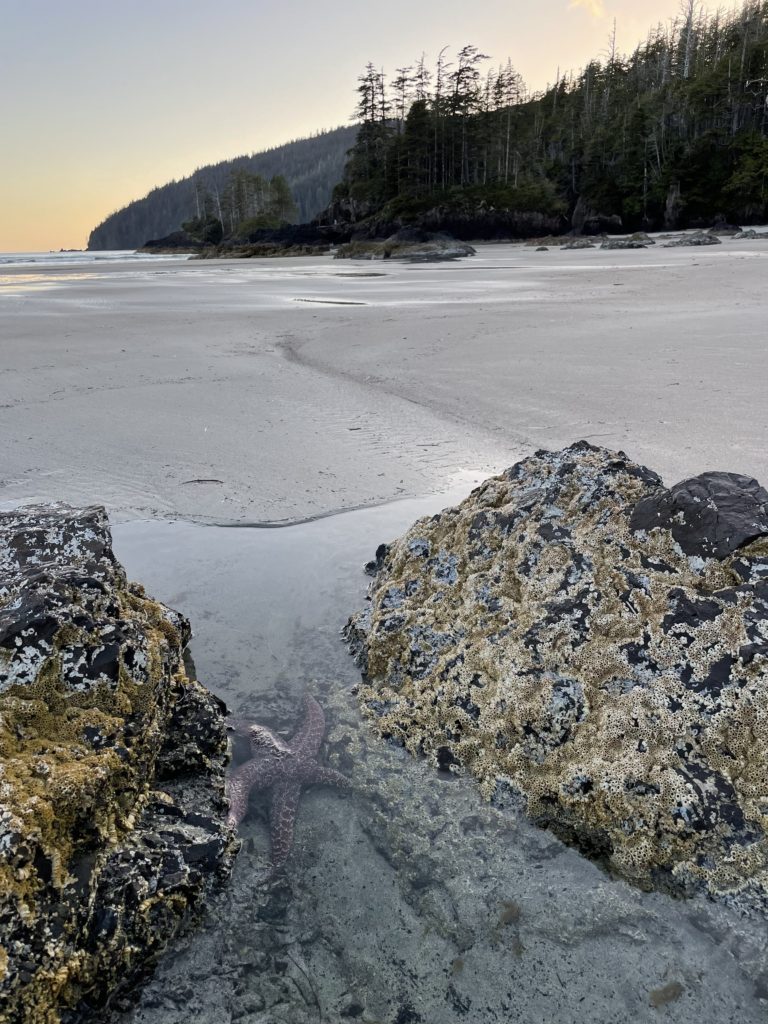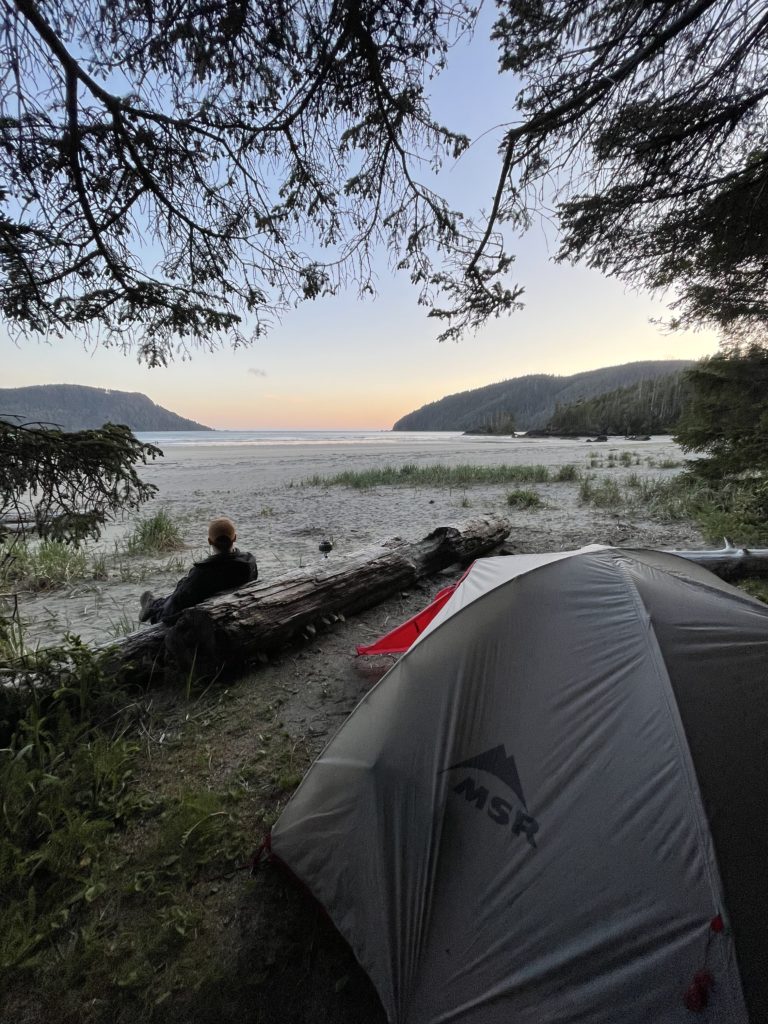
In the past one and a half years we had hiked for several hundred kilometers through the Canadian nature, maybe it was over a thousand already, we never really counted. Within this timeframe we visited and explored a multitude of various natural environments: from the moist, green coastal rainforests on Vancouver Island; over alpine scree fields in the Rocky Mountains where the calls of the Pika echoed; to dry, yellow-toned grass lands in the heart of central British Columbia. In the upcoming articles we want to carry you off to these exciting and haunting locations, if only for a short period of time, so that you can see for yourself, why Canada´s nature grew such deep roots within our hearts. We experienced many small and quite moments, but also went on awe-inspiring and monumental trips, on which we made memories for life that we want to share with you now. Usually, best comes last, but in this case, I would like to toss this idea overboard and that is why I will start with the hike that was the matter closest to our hearts, which is an excellent proof that you can plan your trips to the very detail, in the end everything turns out different than expected. Follow me today into the lush, deep forests of Northern Vancouver Island, where we had some close encounters of the bear kind.
The Cape Scott Provincial Park is located on the North-Western part of Vancouver Island, it is around 560 kilometers away from Victoria and ranges along the pacific coast on around 222 square kilometers. Even though the region may feel very remote, aboriginal people of Canada have lived here in harmony with nature and established a rich cultural life for thousands of years. The Tlatlasikwala, Yutlinuk and Nakumgilisala people have shared the region on the northernmost tip of the island since time immemorial. Today, these nations are united with the Koskimo people from Quatsino Bay as the Nahwitti people who are living in six reserves of which two are within the boundaries of Cape Scott Provincial Park. We want to thank the local First Nation people that they shared their home with us and gave us the opportunity to explore and enjoy this wild nature. At the end of the 19th century the first white settlers who were mostly of Danish descent, tried their luck in the Northern part of the island to earn their living with fishing, but this settlement failed already around 1907. A second try was started around 1909 with populations as big as one thousand settlers at the best times. When soldiers were mustered in for the First World War in 1917 the second try failed as well and only ghost towns remained. In the Second World War a small radar station was established and used from 1942 to 1945. Today, only a manned lighthouse which was built in the 1960s to guide the boats passing by is the remnant of the white settlement.
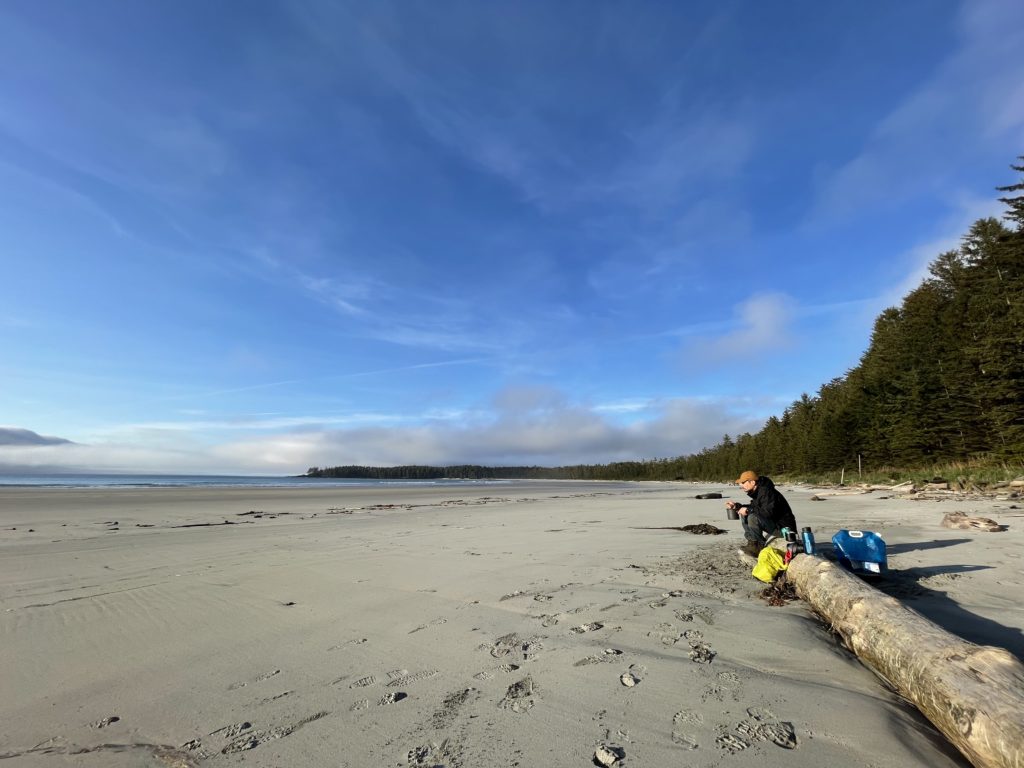
Rain drops rolled down the window, not only from the outside, even on the inside drops of condensation ran down the glass. I had just moved the isolating piece of foam mattress away from the side window and had a drowsy look outside on the green meadow of the small campground on the outskirts of Port Hardy, where Canada geese were already filling the voids in their stomach. The rainfall became so steady on our trip to the North Island that it felt like the island wanted to show us how she was able to sustain a coastal rainforest. The geese did not mind the rain at all and admittedly we are very well accustomed with the rain ourselves considering our German descent. You either learn to love it or to shun it over the course of your life. I belonged to the foremost group of people that adored the rain. Thus, I had no problem at all leaving the warmth of our cozy bed in the back of our truck to pay the luxurious flush toilet on the campsite a quick visit. Normally, I would have made breakfast right away below the dry safety of our truck`s tailgate, but we wanted to enjoy one last high-calorie burger-breakfast in Port Hardy before we would heed the call of the wild. We had opted for a multi-day hike far away from civilization, at least farther from civilization than we had ever been in both Canada and Germany. I had planned this trip for months, had prepared myself on the long rides to and from work by reading books and listening to podcasts, had walked all the trails in my head already. But in the end, my dream of the North Coast Trail had to remain a mere dream: the sheer cost of water taxis and shuttle busses, as well as a self-inflicted knee injury from snowboarding, moved our goal to an unreachable distance. But the dream remained in our heads and so we decided to see at least a part of the trail on a multi-day hike before we had to leave the island.
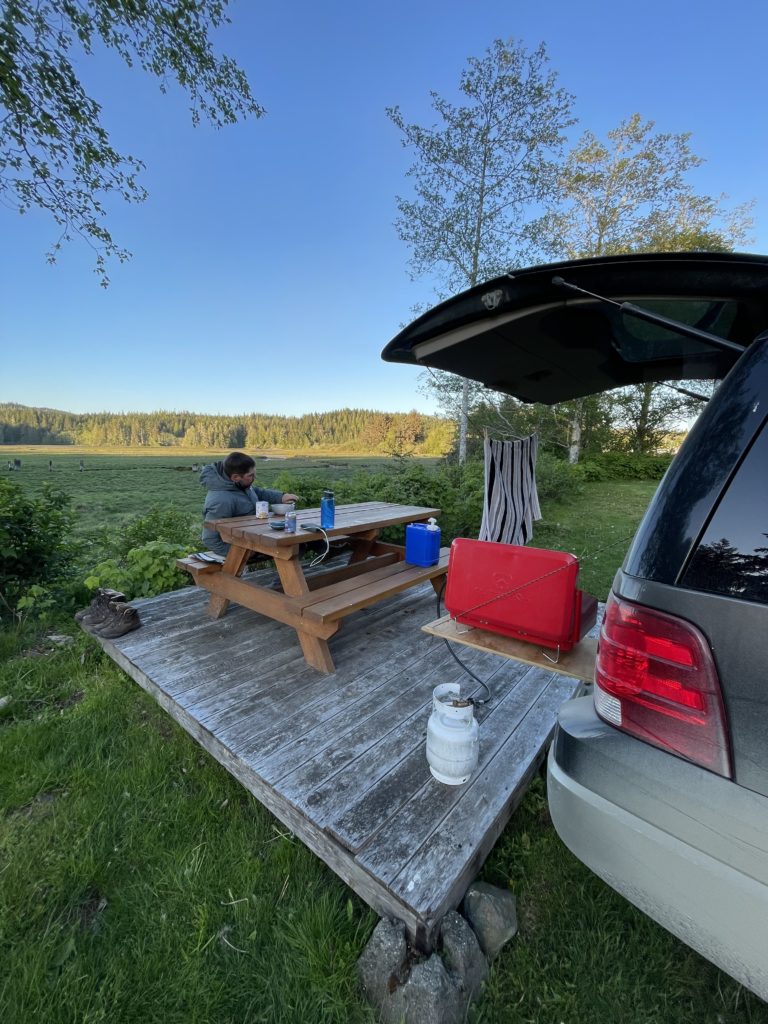
Kevin clearly enjoyed the fatty burger as a breakfast treat, he often had to push his own cravings for real Canadian food to the background, to fulfil my wish for proper, healthy nourishment to sustain our fitness and slender figure. I granted him this small delight, because I knew the struggles that were ahead of us. We had already prepared our backpacks for the hike, but since we had left our ultra-light sleeping bags and mattresses in Germany, the composition of our backpacks promised absolutely no comfort while wearing them. In general, the expensive daypacks that we had bought in Germany, had not been a good choice. The massive mattresses that we had acquired here for cheap money were not only extremely heavy and clunky, but they had also left us high and dry before. I had returned mine for the second time already. But all our travels so far had taught us the ability to relinquish comfort, and it is probably impossible to enjoy the wilderness out there if you are not happy with the small things in life. Before we could finally enter the sixty kilometer of gravel road ahead of us, we had to text a few friends and relatives who were supposed to report us missing if we wouldn’t return to Port Hardy within five-day’s time. This was absolutely necessary, because once you leave the town there was absolutely no cell service at all and hikers and local residents were not exactly abundant where we were about to go. Excited and euphoric we looked in astonishment at every tree, river and lake on our drive towards the Cape Scott Provincial Park, the road seemed to wind through the dense forests endlessly and we felt like we were in the right spot at the right time: a feeling that the vast nature often evoked in our hearts and minds.
Before you reach Cape Scott Provincial Park, you have to pass through the small community of Holberg. It is hard to pinpoint the exact number of inhabitants, because Canada does not have resident registration offices like Germany does. It had to be around 15 to 50 inhabitants that went on about their everyday lives in this remote location, but most of them probably only lived here seasonally. We quickly left the village behind us, because we had everything we needed. Only eighteen kilometers more and we would have reached our first goal: the trailhead of the Cape Scott Provincial Park. Only few trucks were parked here, scattered all over the lot and we parked our home on wheels right next to a car that had either endured a bad rockfall or a minor break-in. This sight motivated me to leave behind a message for potential burglars, that there were certainly no treasures to be found in our truck. But if somebody would feel the need to check out for themselves, we would have no chance to keep them from breaking and entering, while we are gone. We only had the awareness that there was indeed nothing valuable in our car, except for things we valued personally. We hurriedly filled out all the necessary paperwork and put it together with the fees for the stay in an envelope in the small letter box of the rangers, then we loaded ourselves with the heavy backpacks. I had to strap our small tent in front of my chest, because we had exhausted all other modes of transportation. This mule-like outfit was crowned by a huge waterproof poncho, matching our luck so far it was of course raining cats and dogs. We were ready to depart!
The provincial park offered a variety of well-maintained campgrounds, wooden platforms or boundaries made from stones or wood kept the visitors from putting too much pressure on the fragile nature. We wanted to spend our first night at the Nels Bight campground, the hike that we had ahead of us would take us as far as seventeen kilometers and an estimated six hours on foot. Swiftly and highly motivated we got on our way, but we had hardly even walked for a kilometer, when a huge fallen tree made up a well-nigh insurmountable obstacle ahead of us. But moaning and groaning would not help us now, we had to unload everything from our shoulders and Kevin climbed ahead, so that I could throw our backpacks to him, and he threw them down the other side. It took us a while, but together we overcame that first obstacle, which nature might have put in our way as a little measurement of our aptitude at the beginning of our journey. No other obstacle would hold us back as much as this one as we ventured out into the wilderness, but the muddy paths on which large and deep puddles stretched out like lake districts, turned our hike into a cumbersome procedure. The moist climate of the forest gifted us countless encounters with frogs and similar critters, though, which appreciated the rainy weather. Huge raindrops fell from thick, light-green beard-like lichen on our heads and the ferns were sparkling decorated with waterdrops as if they were diamonded. We only encountered small groups of other hikers twice, but did not exchange many words except for a polite greeting. It did not take long until the backpacks hung on our shoulders like lead weights. We had not packed more than what we absolutely needed out here: a dry and clean set of clothes for each of us, extra underwear and socks, sleeping bags and mattresses, toothbrushes and toothpaste, food for the next few days in form of granola bars and camping-cooker-ready food, the tent of course, head lights, bear spray and a first-aid kit. Only our camera was a little bit of luxury, which we could have left behind. Anyways, our shoulder pain was excruciating half-way into the journey.
At the same time the sightings of bear paw imprints in the moist mud increased remarkably. It was easy to tell that the traces were fresh, because they were often accompanied by a streaming pile of scat nearby. All the traces that we intuitively associated with dogs, could only belong to wolves out here, because bringing a dog was forbidden on these trails. Bears, wolves and cougars are not a rare sight in this part of the world, their presence is the main attraction for hikers to explore these remote forests. We did neither see, nor encounter the ones who left the tracks behind. After many miles in dense forests and open boglands, we finally reached our destination: the campground at Nels Bight has two pit toilets, several steel containers to store food and odorous cosmetic products to keep wild animals away from your tent and a little river as a source for fresh water which must be treated to be safely consumed. When you left the dense forest, you entered a seemingly endless white, sandy beach, like you would only expect it in regions closer to the equator, framed by a thick jungle of dark-green conifers, not palm trees. A great deal further to the east along the beach, there is a small ranger cabin which is only staffed in the summer months. We were not alone, when we arrived at the campground. In close vicinity of one of the steel containers, two young women were just packing their stuff and dismantling their tent. We quickly asked them if they had seen any bears around, but they said they had not. So, we granted them their privacy for their departure and walked towards the little river to get water for a relaxing tea and our dinner. We did not assume yet, that this compulsory task did not only have a useful side, but would also present us with an unforgettable memory at the same time.
We were walking along the open beach; the ocean was driven by strong winds and the wild surf made sure that we were unable to hear even the slightest sound around us. Even though, the two women had insisted that they had seen no bears, the beach was covered in large footprints which could only belong to one large predator. Kevin was already visibly uncomfortable, since he hardly had any experience with pets like dogs or similar big animals, a bear´s intentions were obviously an even bigger mystery to him. I was relaxed, I would not have gone on this hike, if I would not have been properly prepared for such encounters. And suddenly, there he was: a large black bear enjoyed a meal of fresh grass on a small green island in the river that flowed towards the ocean. A grandiose sight, which neither of us had expected in this place. While I was trying to get the best photos and videos possible of this huge bear with my smartphone, Kevin urged me to go back to where we came from. But the bear was eating undisturbed and when I was sure that he was not interested, but had definitely seen us, I pressed Kevin to move ahead. We did not have much of a choice, anyways. The bear was in no hurry, but we needed drinking water after the long journey. Only around fifty meters were between us and the large bear, Kevin was convinced this was a suicide mission, the bear hardly acknowledged us with a weary side glance when we walked past. It was a unique moment, which intensified the feeling of seclusion in this wild nature. At the river we looked for a place where the water was not only deep enough, but also not stagnant, filled our foldable water tank and put some chlorine tablets in there. In the meantime, the bear had left his little island and walked eastwards along the beach, we walked along his fresh track back to our camp and saw him disappearing in the tree line along the beach. Despite the departure of the two women, we were not alone on the beach that night: three young men had set up their tents where the bear had been grazing just an hour ago. We decided to set up our tent in the forest because of the ongoing wind and occasional rain and after we were finished, we cooked dinner and a nice, hot cup of tea on the beach. We watched the sun slowly disappear behind the forest in the west and immersing the whole beach in an orange-red light. In this moment, all the troubles of the day were forgotten.
The next day started out early for us, when the first rays of sunlight reached our little clearing in the forest, we were wide awake. The first night in the wild unfortunately did not bring us the expected and needed recovery. A pine marten which we had observed in the evening evening running along the beach, seemed to be very interested in our tent and woke us several times climbing through the bushes around us. Additionally, my air mattress had lost all its cushioning air throughout the night, and we had underestimated the sound level of the waves that crashed very close to us when the tide came in. But even though at night the first fearful thoughts entered our heads, such as: “What do we do in a medical emergency?” or “We are here completely alone without cellphone reception, in the middle of nowhere and nobody is going to miss us for the next few days…”, the next morning brought us the ultimate peace of mind with bird song, the sound of the waves and the whooshing of the trees above us. We cooked another quick meal, this time on the steel containers, because we had to keep the gas bottle warm with our hands, it was so cold that it hardly burned and cooking the water took us ages. But todays hike thrilled us: we wanted to go from Nels Bight to the famous Cape Scott Lighthouse, a daytrip that would take us around four hours to complete. The trail meandered close to the shoreline, on a rotating basis we went through rich, dark-green coastal forests or along rugged, sandy beaches where the waves splashed cold water from the Pacific Ocean. Countless shorebirds romped about the nourishing, ice-cold surf and the trail was framed by numerous, fresh bear scats and footprints, which a massive body had just recently imprinted in the mud. Consequently, we made a lot of noise, talked all the way and walked slowly, to not surprise the bear that was obviously ahead of us. But instead of a bear we met two scared French hikers at Guise Bay who had encountered the bear earlier. They were relieved when we told them that we did not see any bears on our way, after all there was no alternative to this trail. Not much longer and we reached the lighthouse and its five surrounding houses. The view from the top was very disappointing, low clouds and thick fog hung in the treetops of the conifers since early morning. We had a quick chat with the guard of the lighthouse which is one of the last manned lighthouses on Canada´s west coast, before we returned to our tent. He told us about his sightings of a large male black bear just recently, it was probably the one we had seen at Nels Bight.
At our campfire at the beach this evening, which we somehow lit and fueled with moist driftwood, the clouds of the day had lifted, and we were bathed in sunshine. We gobbled down our dinner and went for long expedition along the beach in the golden light of the setting sun. In the tide pools which formed mainly in the rocky parts of the beach, we found a vast number of anemones, small fish and tiny hermit crabs which were busily enjoying the last light of the day. The group of young men left while we were gone and so we had the whole beach at the end of the world to ourselves now. We were happy: so much beauty and we no one disturbed our peace. The night was rough again, with its airy content my mattress also lost its insulating effect, and I was freezing a lot and sleeping even less and so we had to acknowledge in the morning, that it would be smarter to hike back and spend one last night at San Josef Bay close to the parking lot, instead of Nissen Bight. Devastated, we packed all our stuff, dismantled our tent and started our way back which would take us more than twenty kilometers this time, because we would go a bit further south. But the weather was finally great, and we actually had so many encounters with people hiking up north this time, that we were almost happy, we left earlier. On the way back we visited all the highlights of the trail which we had just passed by on our way up because of our poor time management: places where old settler homes had been and even the setting of an old church, where only old pictures held the memory of these places, and huge, old-growth trees that were so massive, you could not even reach around them with your arms. We enjoyed the hike despite the heavy backpacks on our backs and when we arrived at San Josef Bay in the late afternoon, we were overwhelmed by the natural beauty that welcomed us there. Now I could finally tell Kevin about an encounter we had almost ten kilometers back which he had completely missed at that time: a bear was hiding in the forest only roughly three meters away from us and was watching us closely, but I had also not recognized the black creature until I was right next to him. I did not tell Kevin right away because I did not want to scare him, when we had passed the bear, he ran out of the bushes in the direction we came from and did not look back once, making no noise at all.
The beach was downright crowded for a remote location like this and the first thing the other visitors pointed out to us were of course: bears. They were grazing on a meadow on the western end of the beach. We watched them through our binocular for a while, went on to gather fresh water from a well nearby and erected our tent on the edge of the forest, with a gorgeous view of the beach. Now that everything was set up, we excitedly ventured out to explore the fascinating beach. Huge stone walls towered in many places, some were so eroded by the constant tides, they were rising into the blue sky like chiseled pillars on which scattered trees elongated their branches towards the sun. The rocks were studded in barnacles which showed us how high the waves usually crashed into these magnificent cliffs. Green and violet anemones were stretching their tentacles in tidepools in search of food, tiny hermit crabs hiding below them for protection from the seagulls which screamingly circled on their observation flights over our heads. It was delightful to walk barefoot through the dainty sand and to sink into the sand where the waves washed ashore. We walked on until the night descended upon us, talked about everything and anything and enjoyed the soundscape of nature. Exhausted from the long day we sat down in front of our tent to cook a small dinner and watch the sunset and all the colors that came with it. Later, I could not sleep because I felt that the night was intensely bright. Only days later we heard that in this particular night the Northern Lights had been visible far towards the south. But our tent had been facing the wrong direction and so I fell asleep, unaware of the dancing colors that enlightened the night sky.
All good things come to an end, so we packed our bags the next day with heavy hearts for the last time on this trip and hiked back to our car. We were thrilled to see that my note had kept thieves from entering or car, maybe they had seen no worth in him anyways, but he was still sitting unharmed in the exact spot we had left him in. We knew right away that this would not be our last trip to the Cape Scott Provincial Park. We still had to walk the full length of the North Coast Trail, see wolves roaming the lonely sand beaches and spend long days in this remote wilderness. We will be back and next time we will bring a mattress that can hold its air.

